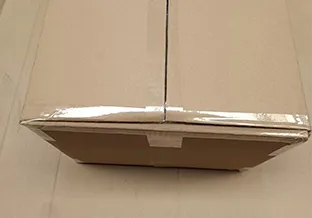
Best Practices for Seasoning and Maintaining Cast Iron Cookware
The Art of Seasoning Cast Iron Cookware
Cast iron cookware has been a staple in kitchens around the world for centuries. Renowned for its durability and excellent heat retention, cast iron is the go-to choice for many chefs and home cooks alike. However, to truly harness the potential of cast iron, it is essential to understand the art of seasoning. This process not only enhances the cookware's non-stick qualities but also protects it from rust and extends its lifespan.
What is Seasoning?
Seasoning a cast iron skillet or pot involves creating a natural non-stick surface through the application of fat. This technique dates back to the 19th century when cast iron was used extensively in households. The fats, whether oils or animal fats, undergo a process of polymerization when heated, forming a hard, protective layer on the surface of the cast iron. This layer is not just for convenience; it also adds flavor to your meals over time.
Why Seasoning is Important
1. Improves Non-Stick Properties A well-seasoned cast iron pan can rival modern non-stick pans, providing an easy cooking experience with reduced food sticking. 2. Prevents Rust Cast iron is prone to oxidation when exposed to moisture. Seasoning creates a barrier that protects the metal, preventing it from rusting.
3. Enhances Flavor Each time you cook with your seasoned cast iron, it absorbs some flavors, which can contribute to the final taste of your dish. Over time, a well-cared-for pan can develop a flavor profile unique to the meals it has produced.
4. Durability The seasoning layer adds to the durability of the cast iron, allowing it to withstand high cooking temperatures without degrading.
How to Season Cast Iron
seasoning cast iron

Seasoning cast iron cookware involves a simple but effective process. Here’s a step-by-step guide
1. Clean the Cookware Start with a clean surface. Wash the cast iron with hot, soapy water and a scrub brush, ensuring all debris and old seasoning are removed. Rinse and dry it thoroughly.
2. Apply Oil Choose an oil with a high smoke point, such as flaxseed oil, canola oil, or vegetable oil. Apply a thin layer of oil all over the skillet using a paper towel. Be sure to cover the handle and the bottom as well.
3. Heat the Pan Preheat your oven to around 450°F (230°C). Place the oil-coated cast iron upside down on the oven rack to prevent pooling, with a sheet of aluminum foil on the rack below to catch drips. Bake for about one hour.
4. Let it Cool After an hour, turn off the oven and allow the pan to cool down inside the oven. This gradual cooling helps the seasoning set better.
5. Repeat as Necessary For newly acquired or reconditioned cast iron, repeat this process several times to build a strong seasoning layer.
Maintenance Tips
To keep your cast iron in top shape, avoid soaking it in water. Instead, clean it with hot water and a stiff brush post-cooking, and dry it immediately. Some cooks even recommend applying a thin layer of oil after every use to maintain the seasoning.
In conclusion, seasoning cast iron cookware is a fundamental skill that enhances cooking efficiency and culinary results. With the right care, a seasoned cast iron skillet can last a lifetime, becoming a beloved kitchen companion that not only serves delicious meals but also carries the history and flavors of countless dishes. Embrace the art of seasoning, and let your cast iron cookware shine!
-
Season Cast Iron Perfectly with GPT-4 Turbo TipsNewsAug.01,2025
-
High Quality Cast Iron Cookware - Baixiang County Zhongda MachineryNewsAug.01,2025
-
Premium Cast Iron Pan: Durable & Perfect HeatNewsAug.01,2025
-
High Quality Kitchen Durable Black Round Cast Iron Cookware Pancake Crepe Pan-Baixiang County Zhongda Machinery Manufacturing Co., Ltd.NewsAug.01,2025
-
Cast Iron Cookware - Baixiang County Zhongda Machinery | Nonstick, Heat ResistanceNewsAug.01,2025
-
High Quality Kitchen Durable Black Round Cast Iron Cookware - Baixiang County Zhongda Machinery | Non-Stick, Heat Retention, DurableNewsJul.31,2025


